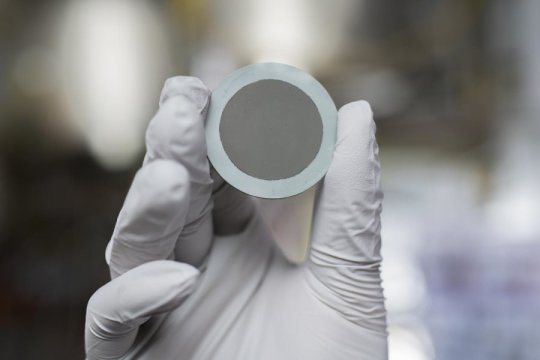Powering clean, efficient cars is just one way fuel cell technology could accelerate humanity into a sustainable energy future, but unfortunately, the technology has been a bit sluggish. Now, engineers may be able to essentially turbocharge fuel cells with a new catalyst.
The sluggishness comes from a chemical bottleneck, the rate of processing oxygen, a key ingredient that helps fuel cells, which are related to batteries, produce electricity. The new catalyst, a nanotechnology material developed by engineers at the Georgia Institute of Technology, markedly speeds up oxygen processing and is the subject of a new study.
Partly to accommodate oxygen's limitations, fuel cells usually require pure hydrogen fuel, which reacts with the oxygen taken in from the air, but the costs of producing the hydrogen have been prohibitive. The new catalyst is a potential game-changer.
Catalyst 8 times as fast
The catalyst achieves the efficiency by rushing oxygen through a fuel cell's system. "It's more than eight times as fast as state-of-the-art materials doing the same thing now
There are a few types of fuel cells, but the researchers worked to improve solid oxide fuel cells, which are found in some prototypical fuel cell cars. The research insights could also aid in honing supercapacitors and technology paired with solar panels, thus advancing sustainable energy beyond the new catalyst's immediate potential to improve upon fuel cells.
Naturally sluggish oxygen
Though they work differently from fuel cells and are much less efficient and clean, combustion engines make a useful metaphor to aid in understanding how fuel cells and the new catalyst work.
In a combustion engine, fuel from a tank and oxygen from the air come together to react in an explosion, producing energy that turns a crankshaft. Adding a turbocharger speeds the process up by mixing fuel and oxygen together more quickly and rushing them to combustion.
Currently, in fuel cells, hydrogen fuel from a tank and oxygen from the air also drive a process that produces energy, in this case, electricity. The two ingredients do come together in a reaction, but one very different from combustion, and much cleaner.
One end of the fuel cell, the anode, removes electrons from the hydrogen atoms in what's called oxidation and sends the electrons through an external circuit as electric current to the cathode on the other side. There, oxygen, which is notoriously electron hungry, sucks the electrons up in what's called reduction, and that keeps the electricity flowing.
The hydrogen, now positively charged, and the oxygen, now negatively charged, meet up to form water, which is the fuel cell's exhaust.
In that reaction chain, oxygen is the slow link in two ways: Oxygen's reduction takes longer than hydrogen's oxidation, and the reduced oxygen moves more slowly through the system to meet with hydrogen. Analogous to the turbocharger, the new catalyst pushes the oxygen forward.
Nano oxygen rush
The catalyst is applied as a sheer coating only about two dozen nanometers thick and is comprised of two connected nanotechnology solutions that break both oxygen bottlenecks.
First, nanoparticles highly attractive to oxygen grab the O2 molecule and let inflowing electrons quickly jump onto it, easily reducing it and tearing it into two separate oxygen ions (each one an O2-). Then a series of chemical gaps called oxygen vacancies that are built into the nanoparticles' structures suck up the oxygen ions like chains of vacuum cleaners passing the ions hand to hand to the second phase of the catalyst.
The second phase is a coating that is full of oxygen vacancies that can pass the O2- even more rapidly toward its final destination.
"The oxygen goes down quickly through the channels and enters the fuel cell, where it meets with the ionized hydrogen or another electron donor like methane or natural gas."
The ions meet to make water, which exits the fuel cell. In the case of methane fuel, pure CO2 is also emitted, which can be captured and recycled back into fuel.
